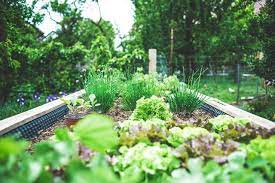The concept of having a “green thumb” may seem like something innate, something you either have or you don’t. But the reality is that anyone can develop the skills and knowledge necessary to grow a thriving garden. With a bit of patience and practice, you can transform your outdoor space into a lush paradise. In this blog post, we’ll explore some tips and tricks for developing your green thumb, so you can enjoy the beauty and bounty of a flourishing garden Learn the secrets of a green thumb with The Dedicated House.
Start with the Basics – The first step towards developing your green thumb is to learn the basics of gardening. This includes understanding the amount of sun and shade your garden gets, the type of soil you have, and the climate in your region. Armed with this knowledge, you’ll be able to choose plants that are well-suited for your space. Don’t be afraid to start small – a few potted plants on a windowsill can be a great way to dip your toes into gardening before tackling a larger project.
Plan Ahead – Before you start planting, take some time to plan out your garden. Consider what kind of plants you want to grow, how much space you have, and how you’ll arrange everything. Keep in mind that certain plants thrive when planted together, while others should be kept separate. For example, tomatoes and basil make great companions, while potatoes and tomatoes should be kept apart. By planning ahead, you’ll be able to create a cohesive, well-planned garden that is optimized for growth.
Embrace Diversity – Biodiversity is key to creating a healthy, sustainable garden. Planting a variety of different plants can help keep pests and diseases at bay, as well as improve soil health. Be sure to include a mix of annuals and perennials, shrubs and trees, fruits and vegetables, and flowers of different colors and shapes. Not only will this create a beautiful, eye-catching garden, but it will also provide a home for pollinators like bees and butterflies.
Get Your Hands Dirty – The best way to develop your green thumb is to get out there and start gardening! Experiment with different techniques, tools, and styles to find what works best for you. Don’t be afraid to make mistakes – gardening is a learning process, and every failure is an opportunity to grow (pun intended). Be sure to pay attention to your plants’ needs, including watering, fertilizing, pruning, and pest control.
Keep Learning – Gardening is a never-ending journey, and there’s always more to learn. Attend workshops, take gardening classes, and read up on the latest trends and techniques in gardening. Join a local gardening club or online community to connect with like-minded individuals and share tips and advice. With continued learning and practice, you’ll soon be a seasoned gardener with a flourishing garden to show for it.
Conclusion:
Developing your green thumb can be a rewarding and fulfilling experience. By understanding the basics, planning ahead, embracing diversity, getting your hands dirty, and continuing to learn, you’ll be able to create a beautiful, thriving garden that brings joy and solitude. Whether you’re a seasoned gardener or just starting out, there’s always something to discover in the art and science of growing your green thumb.



